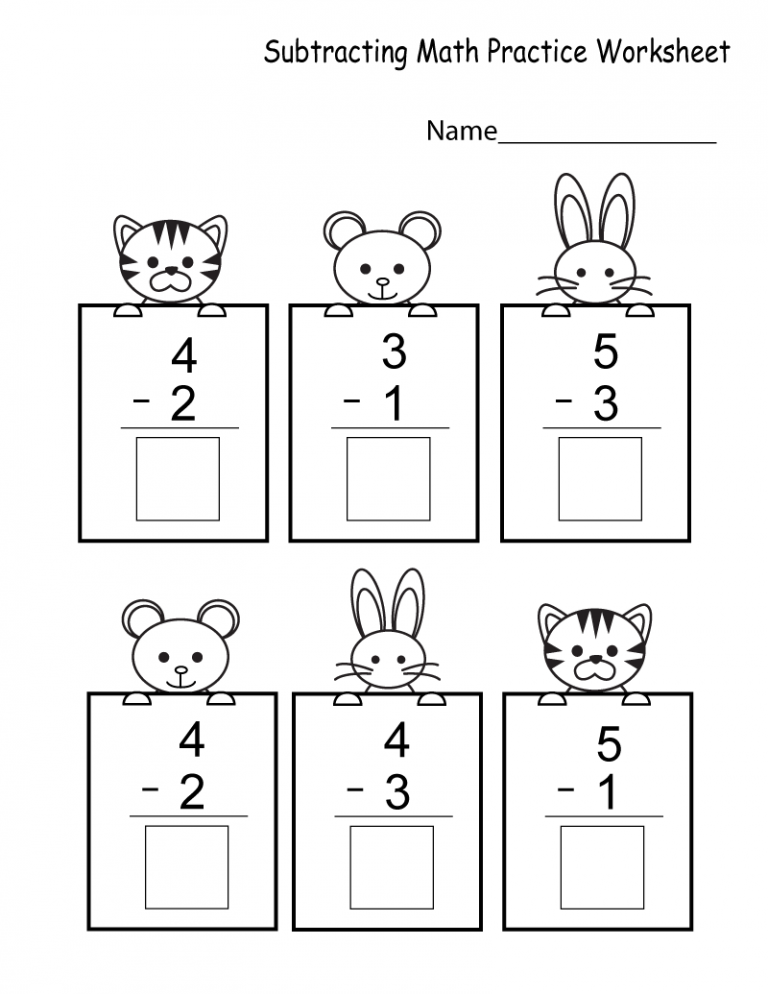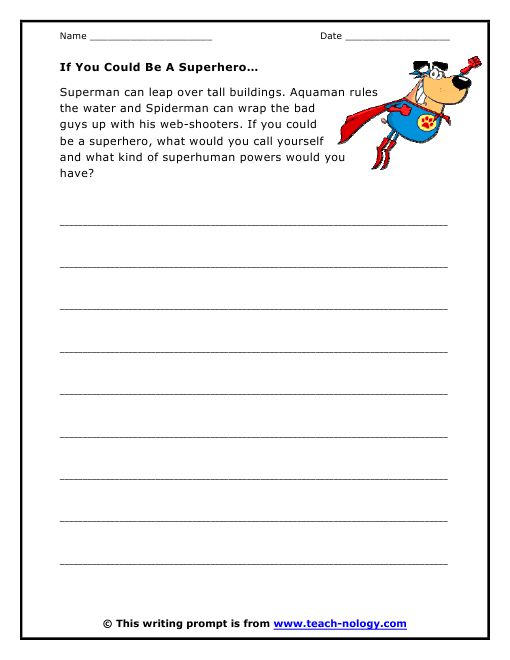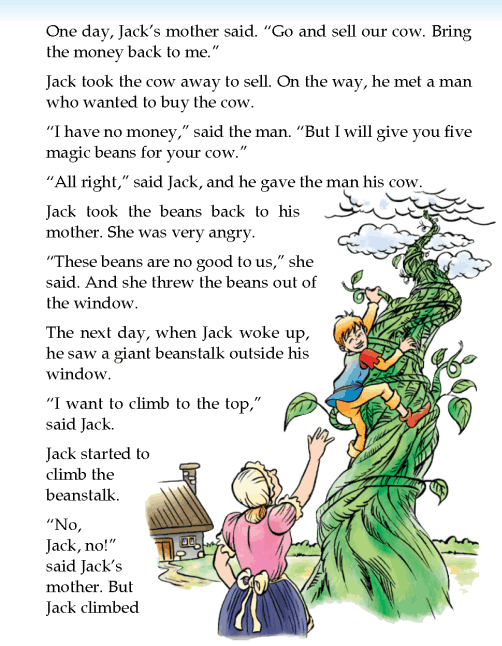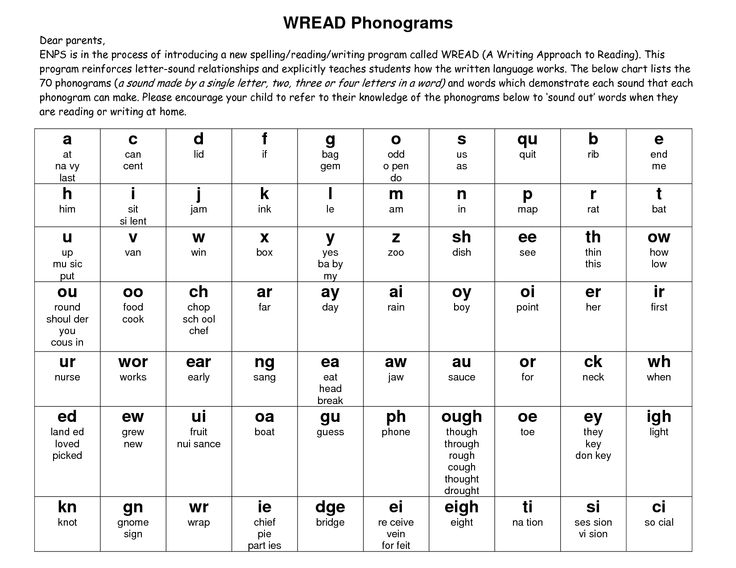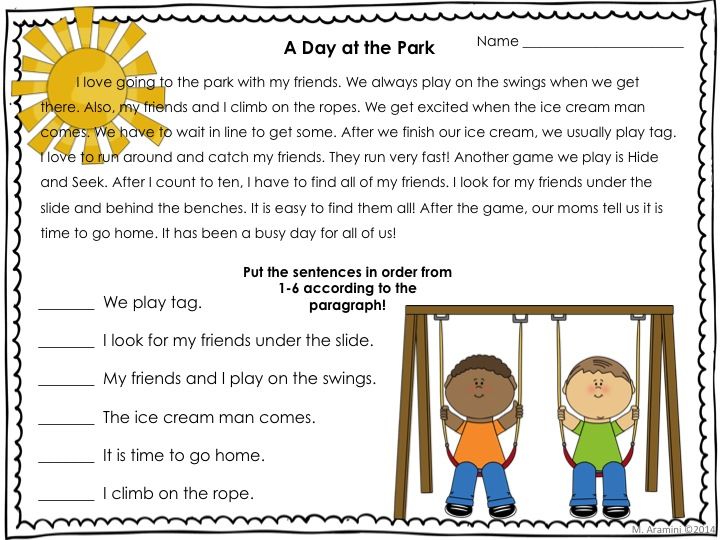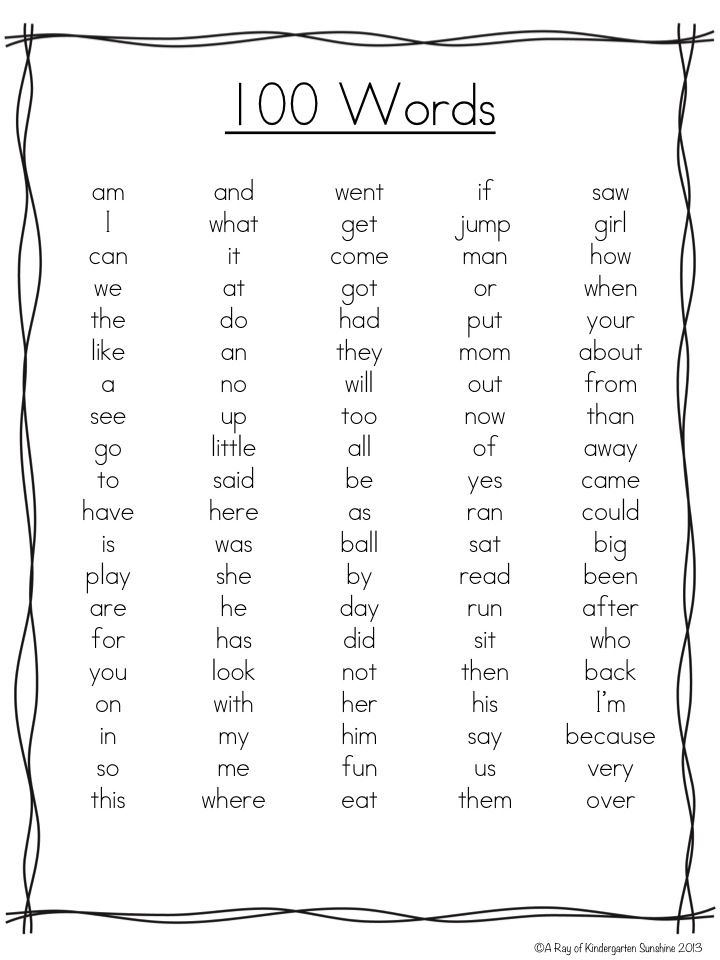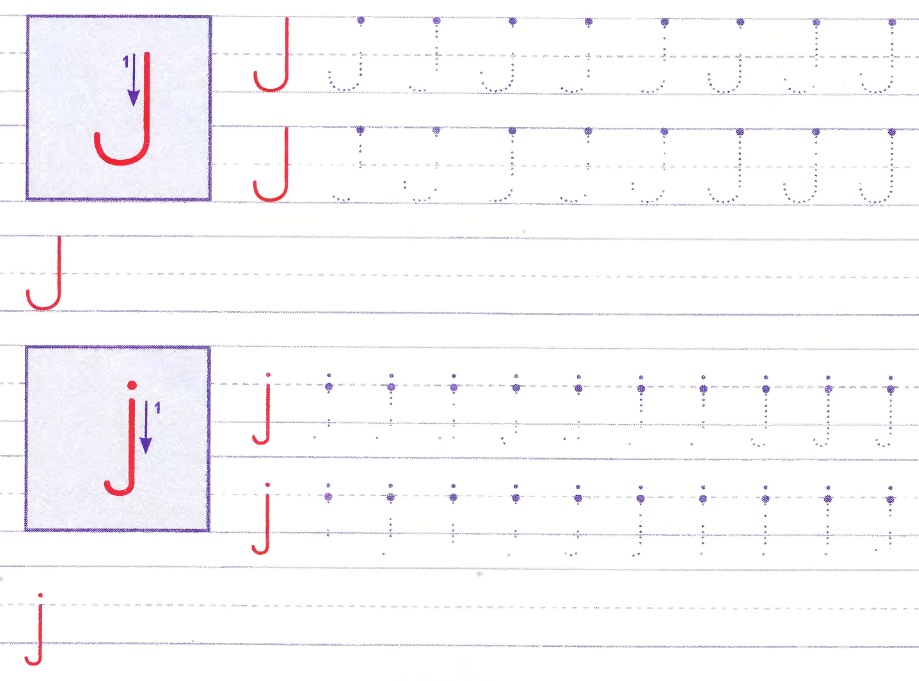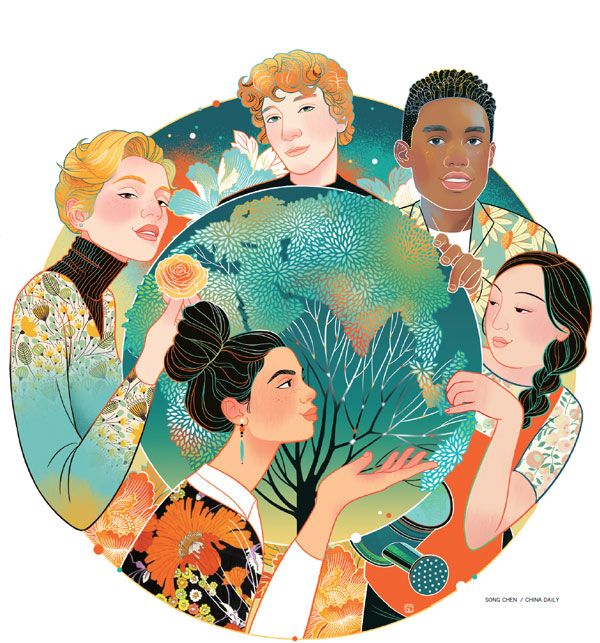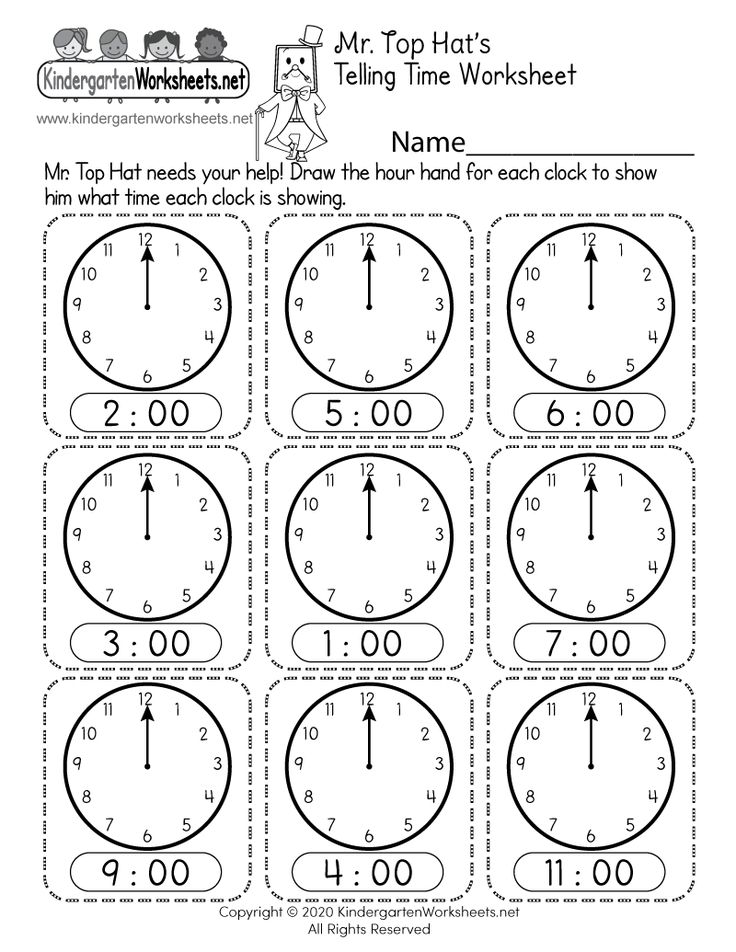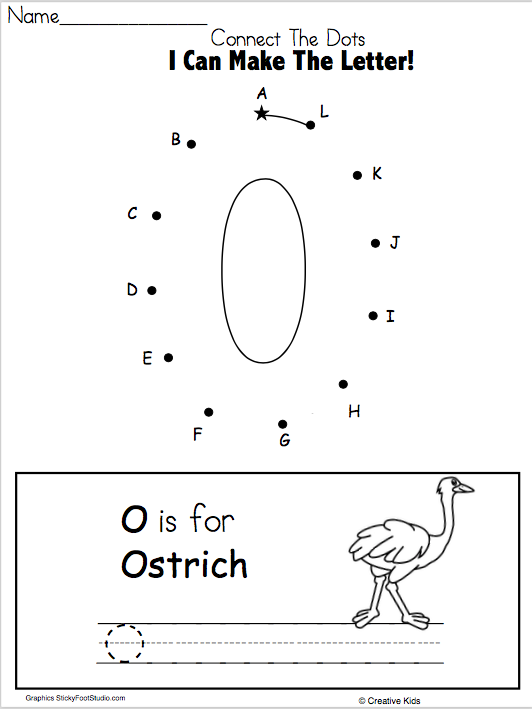Mathematics for pre school
Mathematics in Preschool – Mathematics Methods for Early Childhood
Preschool children are very active, and any program and teacher must take that into account. Emotionally, preschoolers are inquisitive and explorative. Cognitively, they are in the preoperational stage of development in which they begin to engage in symbolic play and learn to manipulate symbols. However, Piaget noted that children at this stage do not yet understand concrete logic. Children at this stage learn through pretend play.
During the first half of the preoperational stage, children are in the “symbolic function substage.” Children at this stage are generally two- to four-years old. They let one object stand in for another and use symbols and signs, such as numbers. They do this through pretend play; therefore, give your preschool children as much time as possible for imaginative play. This then leads to the “intuitive thought substage” in which children are not logical, but think intuitively.
Children at this stage ask many questions and are very curious.
Douglas Clements (2001), suggests that we need preschool mathematics for four reasons: 1) Preschoolers experience mathematics at a basic level, and that needs to be improved, 2) Many children, especially those from minority backgrounds or underrepresented groups, have difficulty in school mathematics and therefore preschool teachers should address those equity issues, 3) Preschoolers do possess informal mathematical abilities and use mathematical ideas in real life, and preschool teachers should capitalize on their interests, and 4) brain research has shown that preschoolers’ brains undergo significant development, their experiences and learning affects the structure and organization of their brains, and preschoolers’ brains grow most as a result of complex activities (Clements, 2001).
Preschool mathematics can be divided into two groups: numerical and measurement. Numerical activities are discrete while measurement activities are continuous.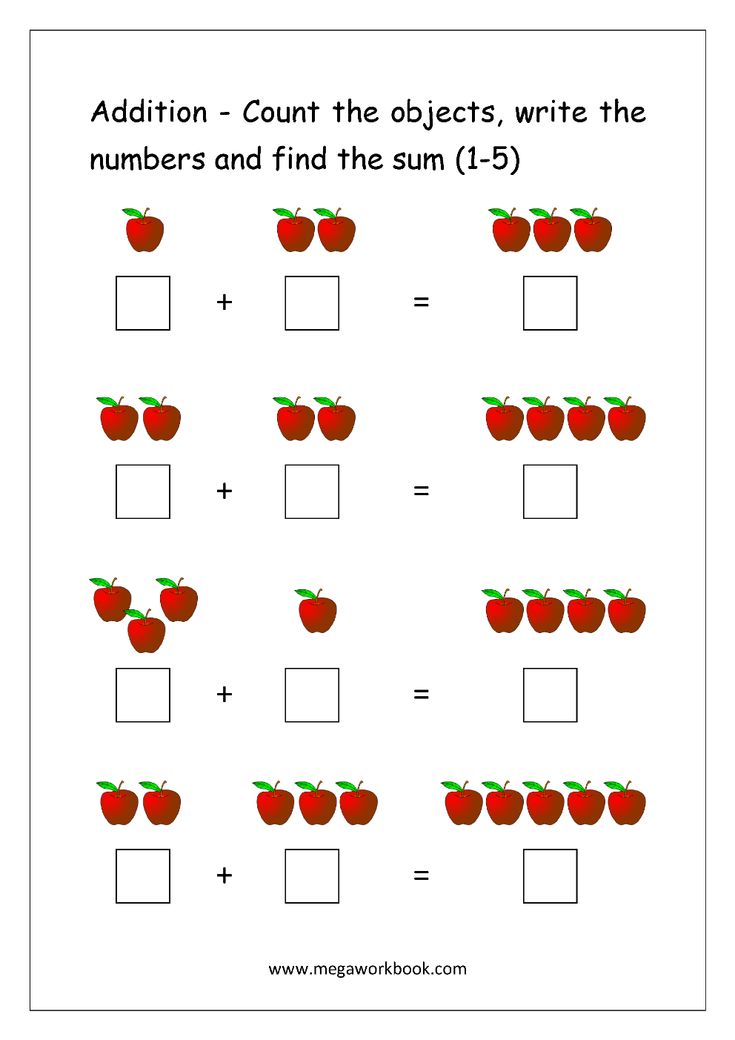 Numerical concepts ask the question, “How many?” and are referred to as discrete quantities because they can be counted.
Numerical concepts ask the question, “How many?” and are referred to as discrete quantities because they can be counted.
Mathematics during the preschool years should focus on number, geometry, measurement, algebra and patterns, and problem-solving. At age three, children can hold up a number of fingers to indicate a quantity.
Number
is the ability to say the numbers in order and involves the memorization of numbers; meaningful or is the ability to assign a number to the objects counted. Children at age three can hold up fingers to indicate a quantity and by age four can count to five or ten, and can tell you what comes next. say how many of something there are, such as one, two, three, four, five; and they answer the question “How many?” tell the position of something in the list, such as first, second, third, fourth, fifth, etc.
There are “rules” for writing and saying number words; it is the base-ten number system that we use (10 digits, 0-9) and we place the greater value on the left.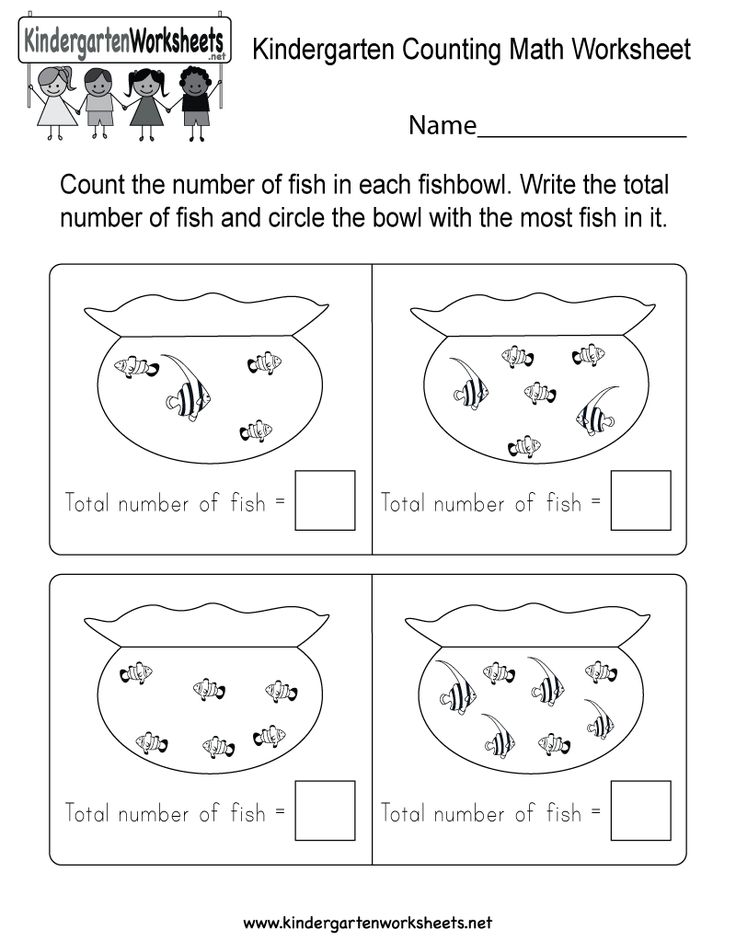 For example, three hundred sixty-two is written as 362. According to Seo and Ginsburg (2004), a child’s ability to write and say numbers does not guarantee their application. Just because a child can say numbers does not mean that they know the quantity associated with that number. Therefore, preschool children begin to put their understanding of “one” to use as they “count up” and develop the meaning of adding one more.
For example, three hundred sixty-two is written as 362. According to Seo and Ginsburg (2004), a child’s ability to write and say numbers does not guarantee their application. Just because a child can say numbers does not mean that they know the quantity associated with that number. Therefore, preschool children begin to put their understanding of “one” to use as they “count up” and develop the meaning of adding one more.
Preschool children must develop the concepts of order and seriation. is the ability to count a number of objects once and only once. is the process of putting objects in a series, for example from smallest to largest. Additionally, young children begin to group objects by their characteristics, such as yellow and blue.
Geometry
Preschool children can use directional words such as “up and down,” and “over and under” as well as comparing words such as “bigger and smaller,” or “longer and shorter.” Additionally, children at ages three to four recognize and name shapes.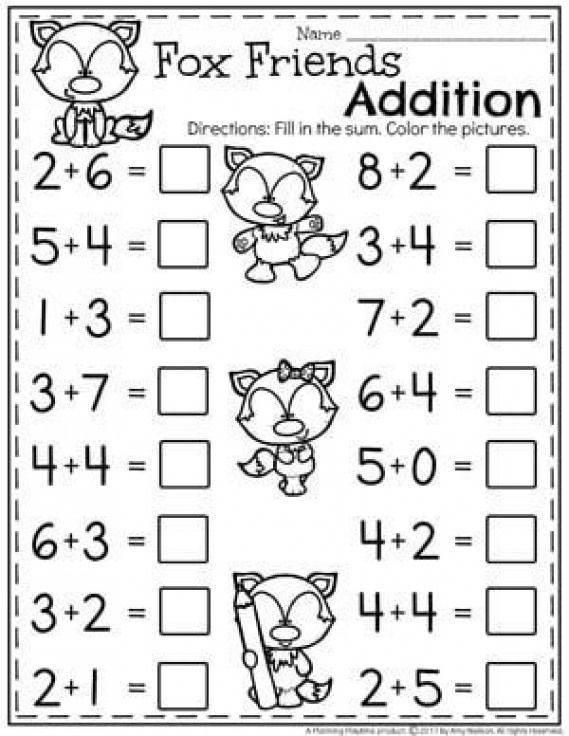 Naming a shape is mathematics, it is language arts. Mathematics comes in as students recognize and classify the attributes of those shapes. Additionally, students are beginning to compose and decompose shapes. For example, they may be able to make a square with two triangles.
Naming a shape is mathematics, it is language arts. Mathematics comes in as students recognize and classify the attributes of those shapes. Additionally, students are beginning to compose and decompose shapes. For example, they may be able to make a square with two triangles.
Measurement
Three-year olds can lay two objects side-by-side and tell which one is longer. By age four, children begin to use non-standard units to measure things. For example, they can tell you how many shoes long a desk is, although they need to use many shoes. They are not yet ready to use one shoe repeatedly.
Children in preschool do not learn to tell time, but they are learning the concept of time. They talk about yesterday, today, and tomorrow.
Algebra and Patterns
Preschool children do algebra by recreating patterns and making their own patterns. Children can recognize, describe, extend, and create patterns from a simple repeating pattern such as “red, blue, red, blue” to a more complex pattern such as “red, red, blue, red, red, blue.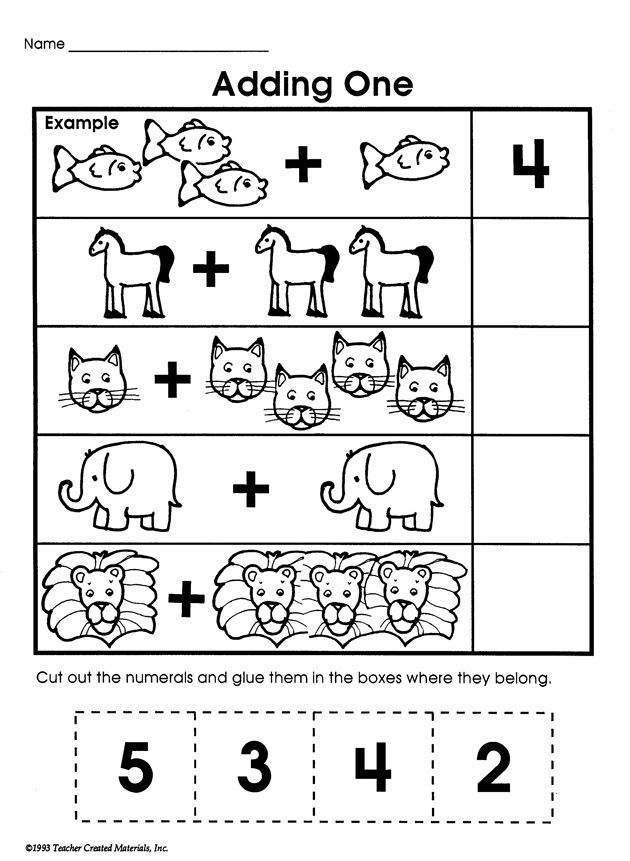 ” They also notice growing patterns such as “1, 2, 3, 4” or “2, 4, 6, 8.”
” They also notice growing patterns such as “1, 2, 3, 4” or “2, 4, 6, 8.”
Problem-Solving
Problem solving is critical at all levels. Allow students to solve a problem without stepping in too quickly. Children begin to link words and concepts; therefore, teachers can begin to use story problems for teaching mathematics. In kindergarten, the words should be simple and short and by first grade, students begin to write their strategy in the problem-solving process.
Each of these content areas will be further developed in subsequent chapters.
Critical Mathematics Concepts for Preschool Children
Activities in the preschool classroom must incorporate the use of manipulatives and hands-on learning, and the main emphasis should be on number sense. Do not use worksheets or independent practice in the preschool classroom, instead plan activities that will develop a strong sense of number and patterns. The following domains are critical concepts as you teach preschool children to be mathematically proficient:
Counting and Cardinality
Number sense is the foundation for success in mathematics and is the first vital skill for preschool children (Resilient Educator, 2021).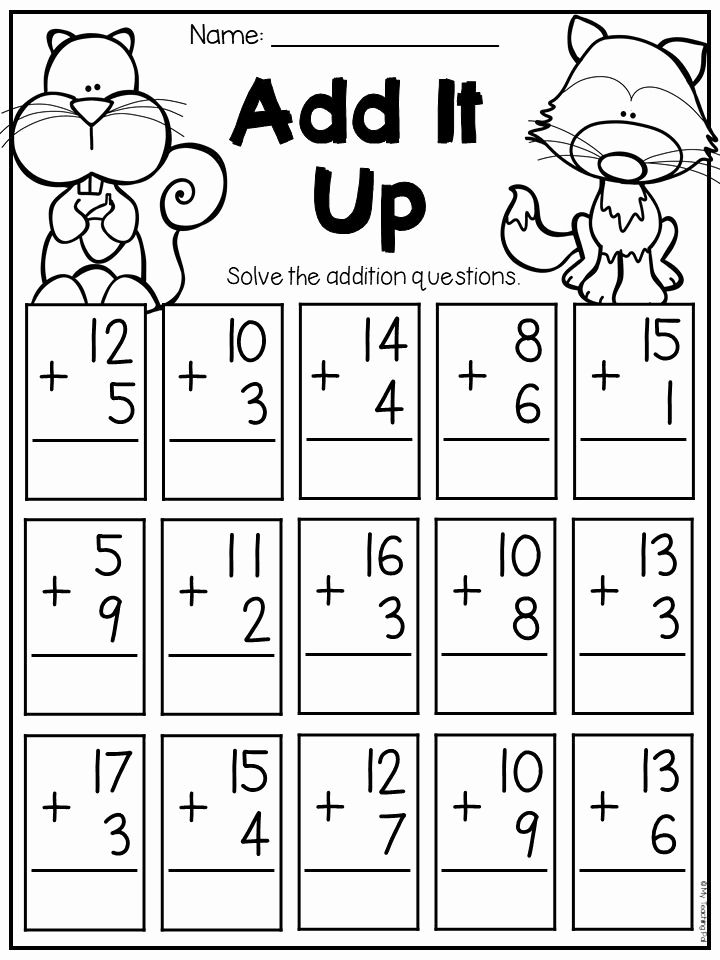 The ability to count accurately is a part of number sense, but also to see the relationship between numbers, such as addition and subtraction. Children should be able to demonstrate simple counting skills before kindergarten. This includes counting to 20, ordering numbers, identifying how many are in a set without counting (subitizing), and understanding that the quantity does not change regardless of the arrangement of the items. Additionally, preschool children should understand cardinality, in which the last number said is the number of items in the set.
The ability to count accurately is a part of number sense, but also to see the relationship between numbers, such as addition and subtraction. Children should be able to demonstrate simple counting skills before kindergarten. This includes counting to 20, ordering numbers, identifying how many are in a set without counting (subitizing), and understanding that the quantity does not change regardless of the arrangement of the items. Additionally, preschool children should understand cardinality, in which the last number said is the number of items in the set.
Operations and Algebraic Thinking
Mathematical ideas become “real” when teachers and students use words, pictures, symbols, and objects. Young children are naturally visual and can build those relationships between numbers and the item represented; therefore, teachers must use pictures and objects to clarify that relationship. As children learn to count, they will learn that the number symbol represents the number of items shown.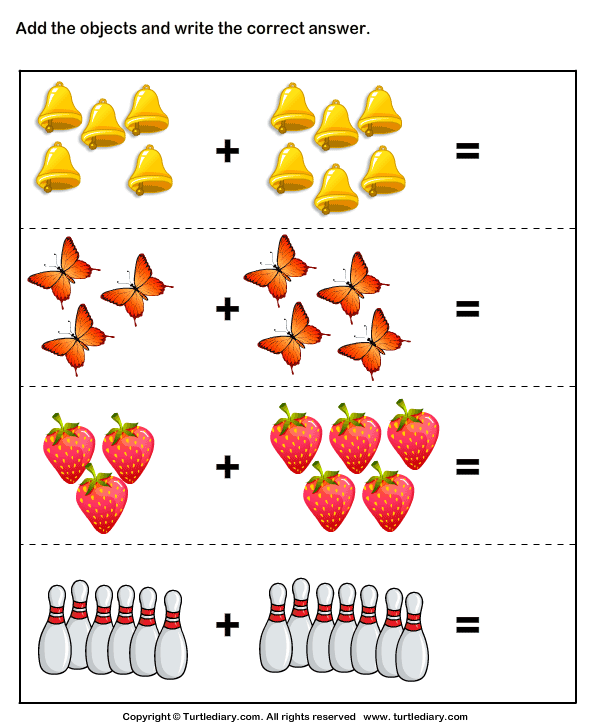
Patterns are things that repeat in a logical way. Manipulatives can help children sort, count, and see patterns. An AB pattern means that two items alternate, such as red, blue, red, blue, red, etc. ABC patterns means that three items are in the pattern, such as bear, cow, giraffe, bear, cow, giraffe, etc. Students will learn to make predictions about what would come next in a pattern.
Number and Operations in Base 10
Preschool children begin to understand that the number “ten” is made up of “ten ones,” although this is a difficult concept. Teachers should allow children to count on their fingers one to ten.
Showing students the meaning of the words more, less, bigger, smaller, more than, and less than can help young children understand estimation.
Measurement and Data
Finding length, height, and weight using inches, feet, pounds, or non-standard units is measurement. Also in this skill area is measurement of time. Teachers should ask their students to notice objects in their world and compare them, for example, “The stepstool is bigger than the chair. Do you think it will fit under the chair?”
Do you think it will fit under the chair?”
Sorting is a skill that preschool children should do often. One way to sort is by color; another way is by another attribute. Teachers can ask students to count the toys in a basket, and then sort them based on size, color, or their purpose. Check out this excerpt from the book Exploring Math and Science in Preschool by the National Association for the Education of Young Children – Sorting Activities for Preschoolers by William C. Ritz.
Geometry
Spatial sense is geometry, but at the preschool level it is the ability to recognize shape, size, space, position, direction, and movement. Teachers can talk with children about shapes – count the sides or describe the shape. Furthermore, talk with children about shapes in their world, such as “The pizza is round,” or “The sandwich is a rectangle.”
Calendar Time
Morning calendar time is a daily part of many preschool classrooms. There is a ritual when children sit on the floor and talk about today, look at yesterday, find out about tomorrow, and write out the date.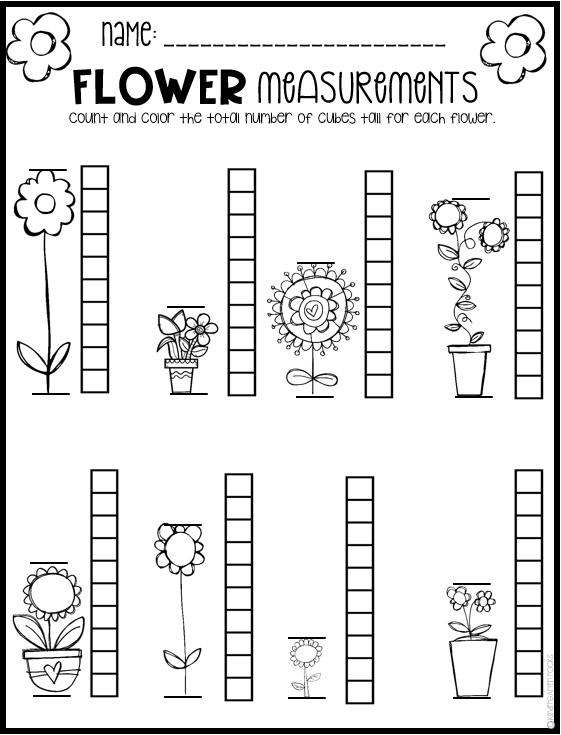 Understanding that time is sequential is critical for young children. They think about before and after, later and earlier, and future and past events. According to Beneke, Ostrosky, and Katz (2008), preschool children generally cannot judge distances or lengths of time. For example, they do not understand that a field trip is in five days and differently than if it is in eight days. And it is different for young children to judge units of time. And although a true understanding of calendar dates comes with maturity, using the calendar to teach other concepts is also valuable time spent in the classroom. For example, vocabulary (month, year, weekend), sequencing (yesterday, today, and tomorrow), and patterns (Monday, Tuesday, Wednesday). They also begin to recognize numbers. Additionally, teachers can use calendar time to teach social skills, colors, letters, and integrate science as they talk about the weather (Beneke, Ostrosky, & Katz, 2008).
Understanding that time is sequential is critical for young children. They think about before and after, later and earlier, and future and past events. According to Beneke, Ostrosky, and Katz (2008), preschool children generally cannot judge distances or lengths of time. For example, they do not understand that a field trip is in five days and differently than if it is in eight days. And it is different for young children to judge units of time. And although a true understanding of calendar dates comes with maturity, using the calendar to teach other concepts is also valuable time spent in the classroom. For example, vocabulary (month, year, weekend), sequencing (yesterday, today, and tomorrow), and patterns (Monday, Tuesday, Wednesday). They also begin to recognize numbers. Additionally, teachers can use calendar time to teach social skills, colors, letters, and integrate science as they talk about the weather (Beneke, Ostrosky, & Katz, 2008).
Manipulatives
Manipulatives are the mainstay of a preschool mathematics classroom (Geist, 2009).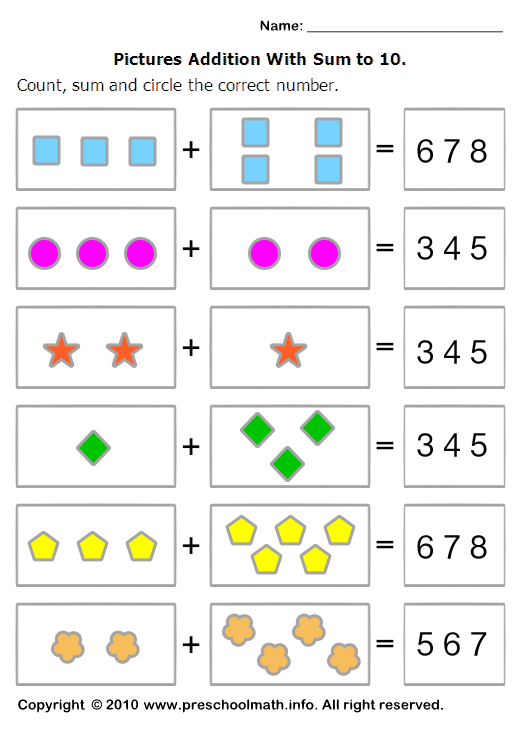 Math are physical objects that are designed to represent explicitly and concretely mathematical ideas (Moyer, 2001). Students need time to explore and manipulate materials in order to learn the mathematics concept. According to Carol Copple (2004), children should be given many opportunities to manipulate a wide variety of things and teachers should provide children to “mess about.”
Math are physical objects that are designed to represent explicitly and concretely mathematical ideas (Moyer, 2001). Students need time to explore and manipulate materials in order to learn the mathematics concept. According to Carol Copple (2004), children should be given many opportunities to manipulate a wide variety of things and teachers should provide children to “mess about.”
One productive belief from the NCTM publication, Principles to Action (2014), states, “Students at all grade levels can benefit from the use of physical and virtual manipulative materials to provide visual models of a range of mathematical ideas.” Students at all grade levels can benefit from manipulatives, but especially at the elementary level. Using manipulatives can
- provide your students a bridge between the concrete and abstract.
- serve as models that support students’ thinking.
- provide another representation.
- support student engagement.
- give students ownership of their own learning.

Adapted from “The Top 5 Reasons for Using Manipulatives in the Classroom.”
Everyday activities can be used to promote mathematics. For example, during snack time children divide up snacks, count plates, and notice the one-to-one correspondence between the number of children and the number of napkins needed.
Preschool Math Activities - Stay at Home Educator
Developing mathematics skills begin long before children enter formal schooling. This is why choosing out which preschool math activities to include in your lesson plans are all the more important.
In fact, preschool and toddler aged children are constantly playing with math. They naturally sort and organize. They build and design. These are mathematical skills children have a natural interest in and their beginning development comes through the very natural act of playing.
It is all good and well to say that math skills develop naturally, but young children also benefit from purposeful preschool math activities.
The 5 Disciplines of Preschool Math Activities Instruction
Teaching math to preschoolers isn’t about doing endless preschool math worksheets. Learning activities should be hands-on and engaging, while targeting important number skills.
But preschool mathematics is more than just teaching counting and number identification. There are five disciplines in mathematics, which are taught in the following units:
Number Sense
Graphing
Measurement
Patterning
Shapes
Sorting
Wondering What to Teach in Preschool Math?
Not sure what math skills you should include in your preschool math lesson plans? Or what kind of preschool math activities you should include? Grab a free checklist below.
How to Teach Math to Preschoolers
Young children love to play with mathematics, and through play is where some of the strongest mathematical connections will be made.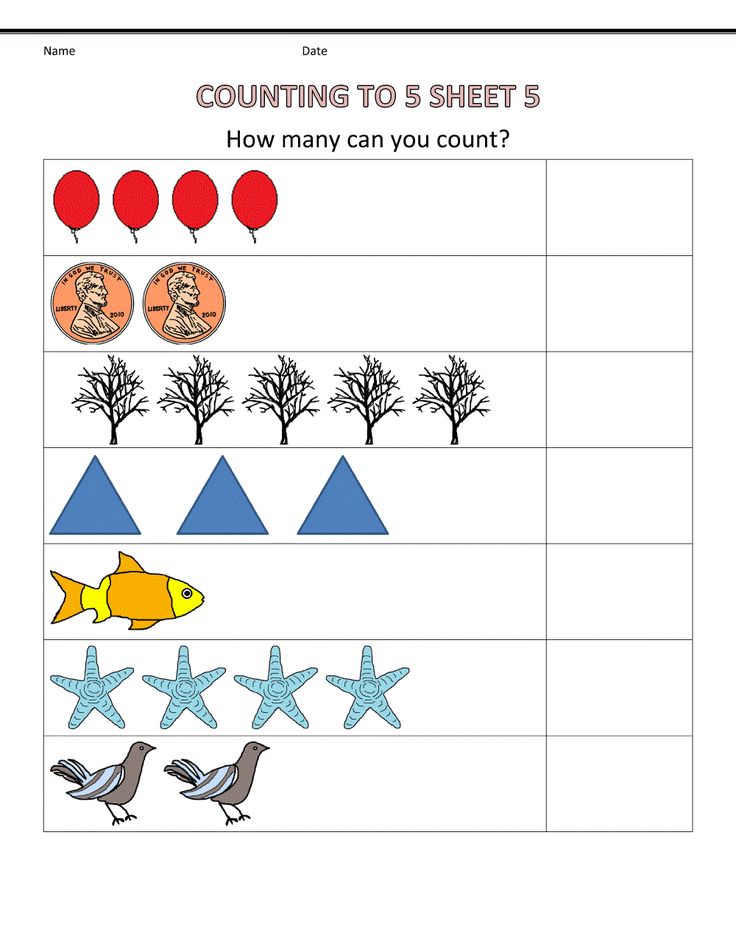 These connections will provide them with the right foundation to learn formal math with ease.
These connections will provide them with the right foundation to learn formal math with ease.
Unfortunately, many elementary-aged children claim they hate math!
So this begs us to ask a question of ourselves as parents and teachers: What has happened to their enjoyment and confidence? Where has the joy gone? The joy they used to experience when building math skills?
And then we ask…what math activities for preschoolers are the most important? Am I planning the right preschool math activities so my students experience joy and excitement when learning math?
The early years allow children to explore mathematics in a natural way. Through hands-on activities and play! Through preschool math games, too!
Think of the toddler who lines up his tractors in a neat row, or sorts her snack crackers by color. Or the preschooler who turns a puzzle piece to find the right fit or uses blocks to build a tower in increments of two. These are examples of preschool math activities that naturally occur in early childhood.
They are playful but purposeful. And meaningful, too.
And it is through purposeful and active lessons that preschoolers can be taught a strong foundation in all five disciplines in math.
The Five Disciplines of Math Explained
All mathematics skills are summed up into five disciplines or domains. They are not just for high school students, or middle school, or just for elementary students. The five disciplines of math also apply to preschoolers.
It may sound intimidating, but it doesn’t have to be. The instruction in all five disciplines is absolutely necessary to give preschoolers the best beginning possible in mathematics. They are:
- Number Sense
- Algebra
- Geometry
- Measurement
- Data Analysis
You might be thinking, “Seriously, I supposed to teach algebra to preschoolers?!”
Well, yes, but if you stop to think about it, teaching all five disciplines is easier than you think. And it is easy to make it developmentally appropriate for preschoolers, too! And, it is completely necessary for a complete and well-rounded preschool education.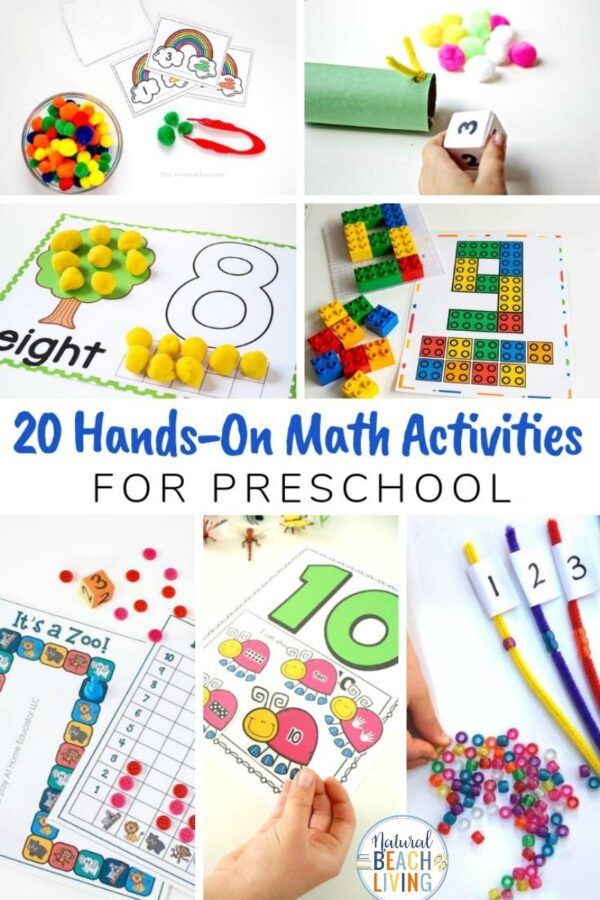
What the Five Disciplines of Math Look Like in Preschool
Think about it like this: the following are some basic strands within each discipline.
- counting, number identification, addition and subtraction (number sense)
- patterns, comparing and sorting (algebra)
- shape identification, shape differentiation (geometry)
- comparing sizes, lengths and weights (measurement)
- graphing, simple estimation (data analysis)
To learn more about each domain, and to see way preschool math activities that fit within each, click the following links:
Number Sense Activities for preschoolers
Algebra Activities for preschoolers
Geometry Activities for preschoolers
Measurement Activities for preschoolers
Data Analysis Activities for preschoolers
Did You Grab your FREE Preschool Math Skills Checklist?
Take the guesswork out of how to teach math with this free preschool math skills checklist.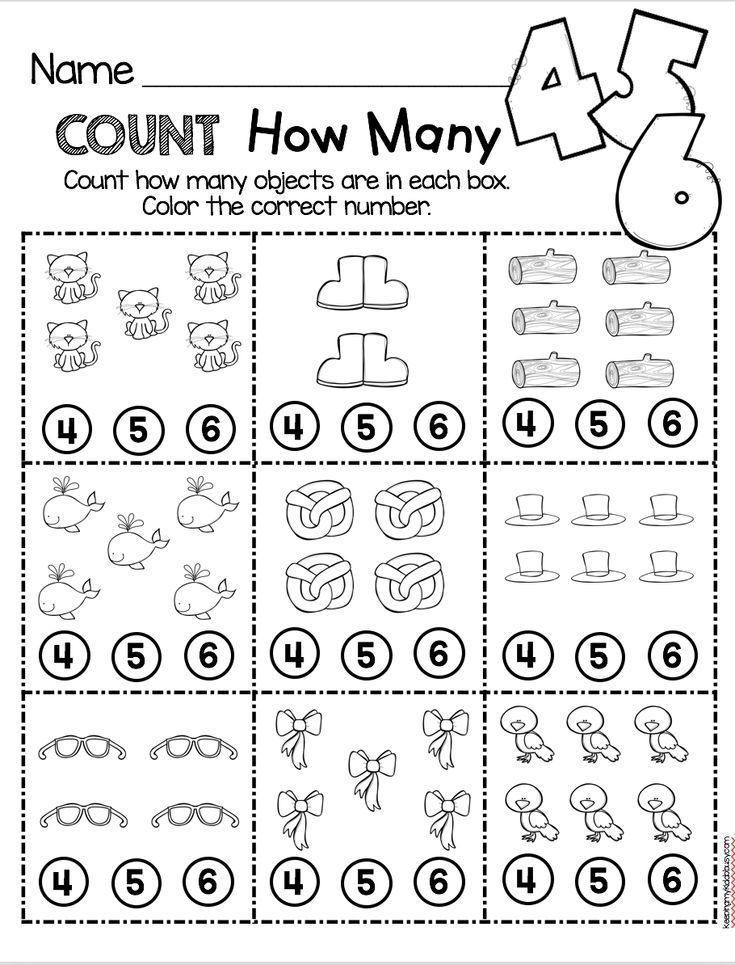 Just click the image and a pdf will be sent to your email.
Just click the image and a pdf will be sent to your email.
Printable Math Centers for the Entire Year
Having printable number cards, play dough mats, and other number activities for the entire year makes planning your preschool math centers even easier! Practice number matching and identification along with fine motor skills.
Free Printable Math Activities for Preschoolers
Entertaining math for preschoolers, online math games and tasks
HomeExerciseMath
Math
Learning shapes course
View all
What is symmetry?
Part of the whole
We study the figures (1)
We study the figures (2)
Study the figures (3)
We study the figures (4)
Posal Line
polygon
polygons (1)
View all
Course Learn numbers
View all
Number 1 (1)
Distinguish numbers from 0 to 9 (1)
Distinguish numbers from 0 to 9 (2)
Distinguish numbers from 0 to 9 (3) 9000
Distinguish numbers from 0 to 9 (4)
Number line up to 10 (1)
Digit 1 (2)
Digit 2 (1)
Digit 2 (2)
See all
View all
Funny numbers (1)
Funny numbers (2)
Cheerful count up to 3
Cheerful count up to 5
Where else? (1)
Where is more? (2)
Let's count!
Remove the numbers up to 3
We play and consider
View all
Consider up to 10
View all
Funny account up to 10 (1)
Funny score up to 10 (2)
Tasks for up to 10 up to 10 (1)
Number line problems up to 10 (2)
Play and count (1)
Play and count (2)
Which is in order up to 10?
Count down from 10 to 1 (1)
Count down from 10 to 1 (2)
View all
Count up to 20
View all order up to 20 (1)
We correlate objects and numbers up to 20 (1)
Composition of the number 12
Count in pairs up to 20 (1)
Count objects up to 20
Count objects up to 20 (2)
Count items up to 20 (3)
Count items up to 20 (4)
View all
Count up to 100
View all
Approximate count (2)
Millimeter
Approximate count (1)
Arrange in order to 100 (1)
Count to one hundred
View all
Number composition
View all
Number composition 3 20 90Ol000 Learning to solve problems up to 10 (1)
Learning to solve problems up to 10 (2)
Examples in pictures
Subtract and add
Subtraction with the transition through a dozen (2)
Subtraction through ten (3)
Drag answer
Addition.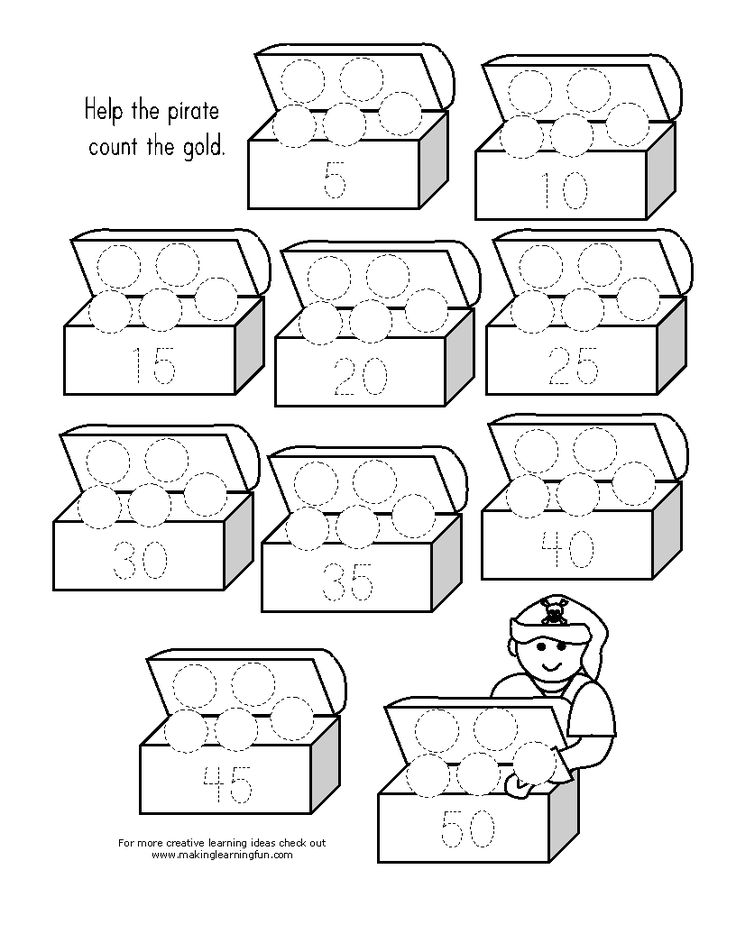 Terms. Sum. (1)
Terms. Sum. (1)
Addition. Terms. Sum. (2)
View all
Compare numbers
View all
Longer, shorter, equal in length
Comparing numbers in pictures up to 10
Odd or even
Comparing expressions. Equalities and inequalities
Comparison of numbers within a million
Comparison of numbers in pictures up to 20
Comparison of numbers within 20
Compare the numbers
View all
We multiply and divide
View all
Remember the multiplication table
Division by 10 and 100
Division with a remainder of
The division of a three -digit number by a single -digit
Multiplication and division problems
Do you know the multiplication table? (1)
Do you know the multiplication table? (2)
Written division with remainder
Written multiplication by a two -digit number
View all
We solve problems and examples
View all
Learning to solve problems up to 10 (1)
Money LOVE
diagrams
Subtraction checks for multiplication tasks and tasks for multiplication and division
Examples with brackets
Add and subtract
Composition of the number
Composition of the number
View all
Determine the time
View all
days of the week (1)
days of the week (2)
Memorial months (2)
Distinguish the seasons
We remember months (1)
Determine the time by shooters
hours with arrows
Autumn riddles (1)
Seasons - spring (2)
View all
Why do we need mathematics?
Mathematics is a fundamental science that appeared at the moment when a person needed to calculate something.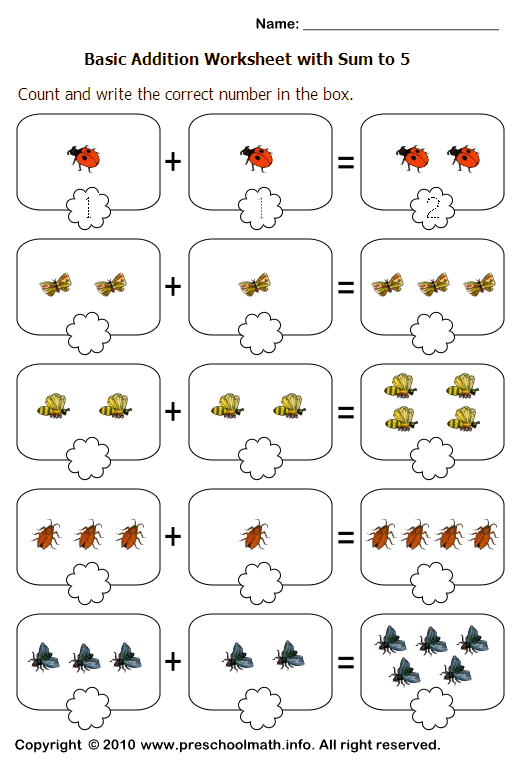 We can say that her age is not much different from the age of mankind. Mathematics helps, on the one hand, to develop abstract thinking, on the other hand, to solve applied problems in everyday life.
We can say that her age is not much different from the age of mankind. Mathematics helps, on the one hand, to develop abstract thinking, on the other hand, to solve applied problems in everyday life.
Mathematical thinking, or mathematical mindset, is based on logic, the ability to build cause-and-effect relationships, critical thinking, the desire to get to the bottom of a question or problem.
Mathematics forms skills that are relevant for any historical period, especially for the present.
What is entertaining mathematics?
Undoubtedly, mathematical abilities are developed by special efforts.
One option is to study mathematics by solving mathematical problems. For an easier and more exciting learning process, a special section is used - entertaining mathematics. In thoughtful game tasks, interesting plots, using humor, the science of mathematics appears in the most attractive form, which is especially important when teaching children.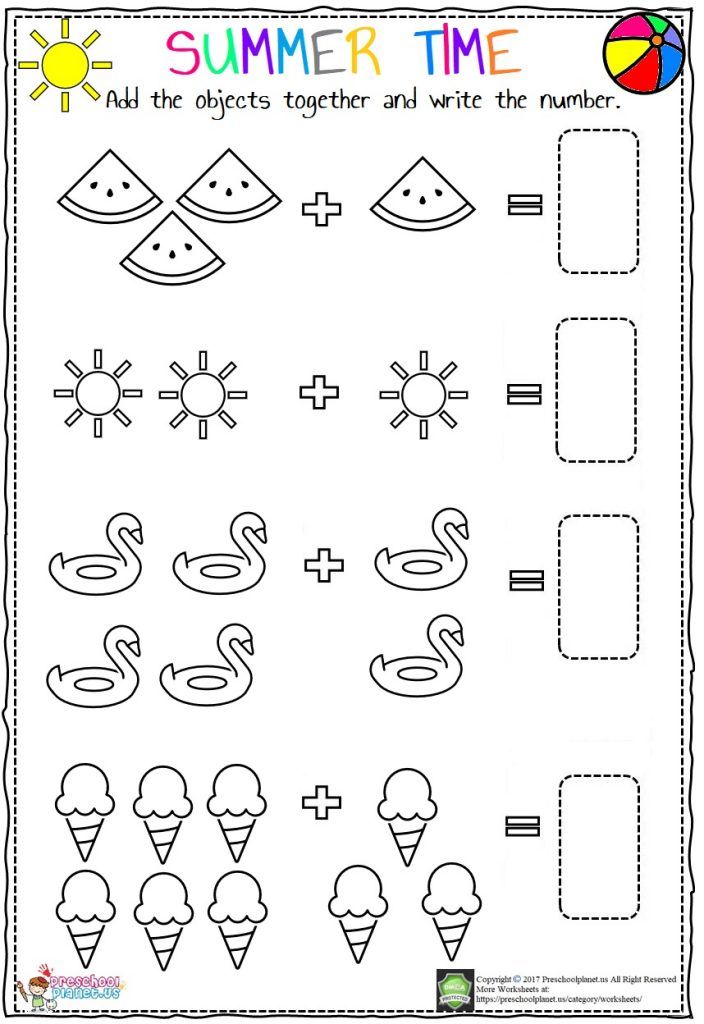 Children's curiosity and excitement allow you to get involved in the world of abstract calculations and go from entertaining puzzles to real complex mathematics.
Children's curiosity and excitement allow you to get involved in the world of abstract calculations and go from entertaining puzzles to real complex mathematics.
Why does the child not understand mathematics?
There is no definite answer to this question. Perhaps the child has not yet fully mastered the skills of counting. Here, counting games from very simple to complicated options, for example, with dice (as an option, rpg board games) will help.
Very young children may still have unformed abstract thinking: it is easier for them to operate with visual objects. A parent or teacher always shows the application of mathematics, explaining why mathematics is needed in life.
If we are talking about an older age, then it is possible to structure abstract thinking in the form of diagrams on paper, helping not to keep all the data in mind, but to see the full picture visually.
If mathematics is difficult for a child, it may be worth paying additional attention to the development of imagination.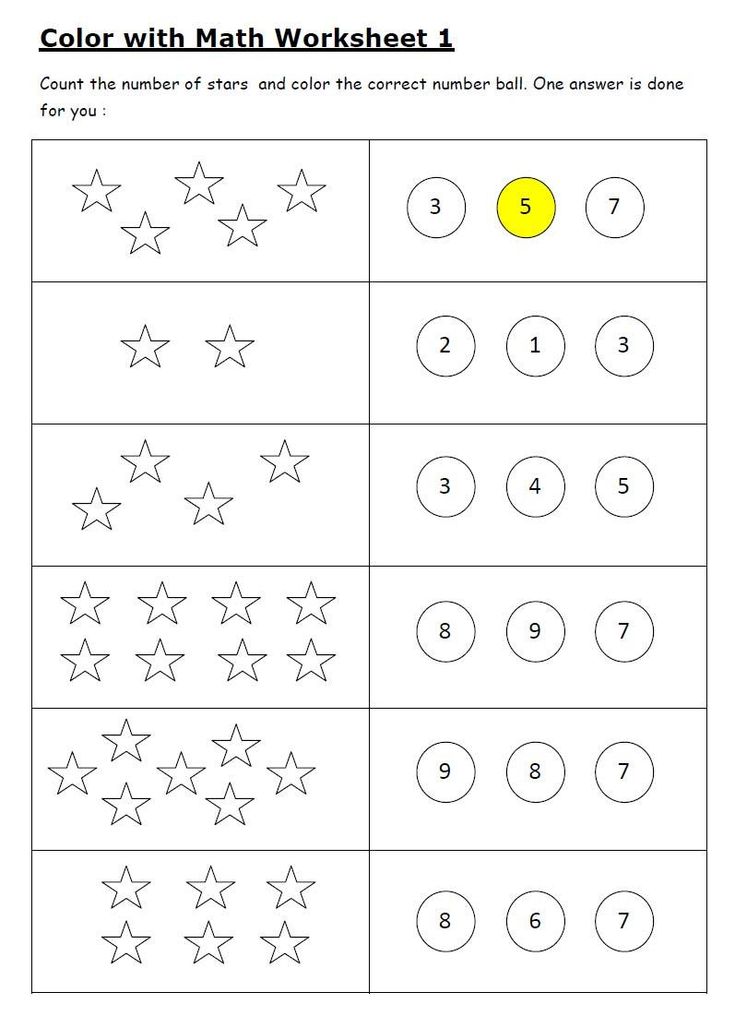 It is not necessary to use the detailed solution of math problems; you can go through mazes, cut out patterns, collect various crafts according to the schemes. Creativity is welcome, because mathematics is not always about dry numbers.
It is not necessary to use the detailed solution of math problems; you can go through mazes, cut out patterns, collect various crafts according to the schemes. Creativity is welcome, because mathematics is not always about dry numbers.
Math in pictures for preschoolers online is now available to every child. The section includes tasks and games in arithmetic for children, exciting tasks that develop addition and subtraction lessons for children. The exercises in this section will help develop attention and concentration, form elementary mathematical concepts in children.
Playful activities
Your child will have a fun and productive time.
Children are engaged with pleasure, are completely immersed in the learning process and achieve results. For children under 6 who have not yet learned to read, we voiced each task.
Cups and medals for children
Awards that motivate children to achieve success.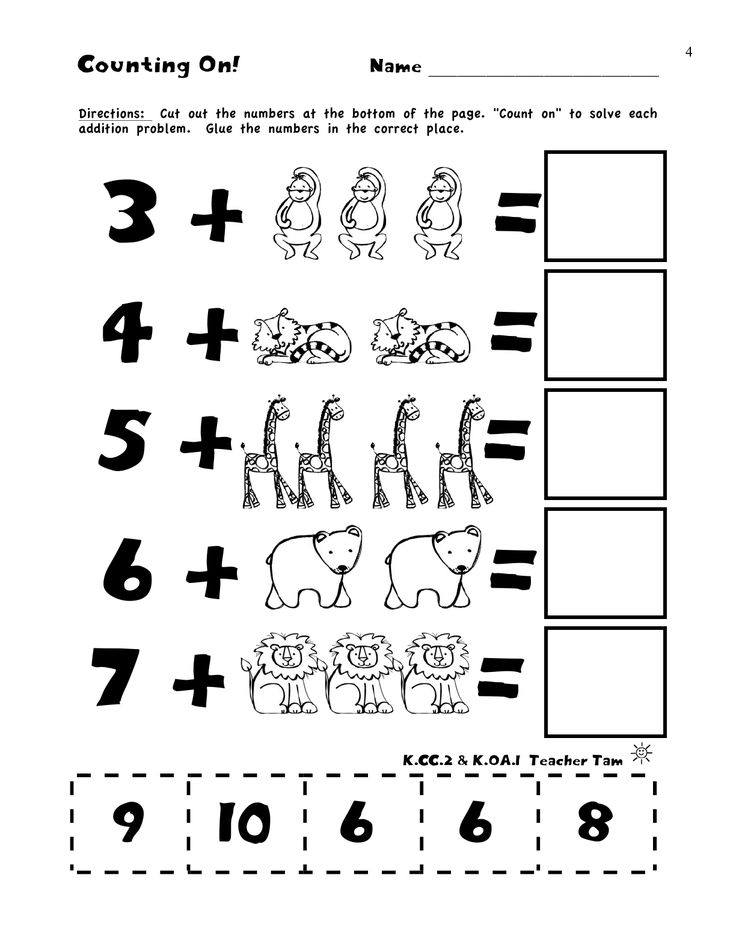
Each child has his own “hall of awards and achievements”. If the tasks are completed correctly, children receive cups, medals and nominal diplomas. The awards can be shared on social networks, and the diploma can be printed.
Personal training
Fully controlled development of the child.
We save all the successes of the child and show you what you should pay special attention to. Make up your own training programs so that the child develops harmoniously in all the right directions.
Start studying with your child
today - it's free
Register and get 20 tasks for free. To remove restrictions and achieve great results in your studies - choose and pay for the tariff plan that suits you.
Register orChoose a plan
Math for kids 4, 5, 6, 7 years old
children, both at home and in preschool and school institutions.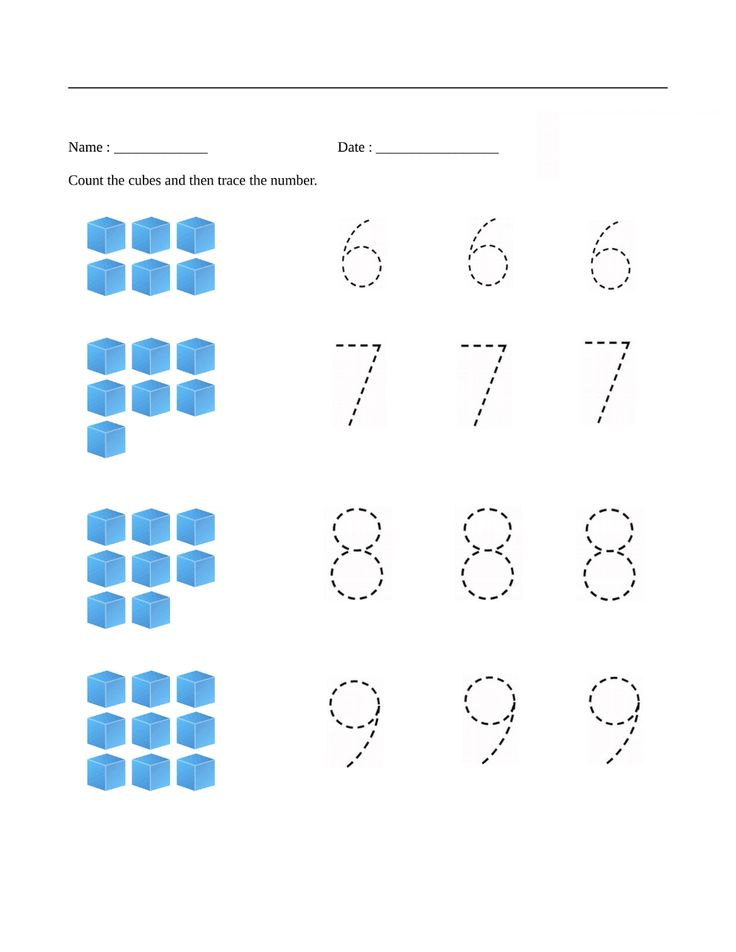 Learning math in a playful way is a very interesting activity even for those children who do not show much love for learning. Also, such tasks are great for little fidgets who cannot sit in one place for 5 minutes. Each game task is designed for a younger child - it is designed in such a way that the child does not get tired, and at the same time receives a useful portion of knowledge and skills. The main thing is not to solve all the tasks at once, only one at a time!
Learning math in a playful way is a very interesting activity even for those children who do not show much love for learning. Also, such tasks are great for little fidgets who cannot sit in one place for 5 minutes. Each game task is designed for a younger child - it is designed in such a way that the child does not get tired, and at the same time receives a useful portion of knowledge and skills. The main thing is not to solve all the tasks at once, only one at a time!
Mathematics for children 4, 5, 6, 7 years old - choose a section for learning
Mathematics for children is presented here in several sections, each of which develops certain skills in teaching a child. For example, counting up to 10 and 20 is intended for children who are learning to count objects, but still do not know numbers well and do not know how to solve mathematical expressions. In the section with tasks in mathematics, more complex tasks are presented, in which examples, tasks, and various tasks for adding, subtracting, dividing the number of objects into equal parts, etc.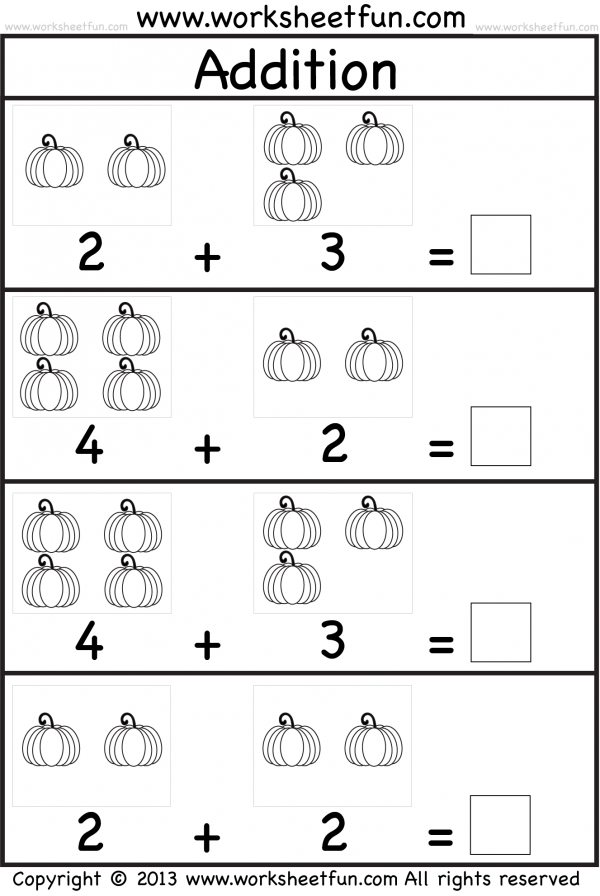 can be found. In tasks with geometric shapes, children will get acquainted with the shapes and names of geometric shapes, perform simple tasks to consolidate the learned material. Also, tasks with mathematical signs (greater than, less than, equals sign) are given separately.
can be found. In tasks with geometric shapes, children will get acquainted with the shapes and names of geometric shapes, perform simple tasks to consolidate the learned material. Also, tasks with mathematical signs (greater than, less than, equals sign) are given separately.
Learn to Count to 10 - Fun Picture Activities
In this section, we learn to count to 10 with fun picture activities for preschoolers. Learning to count in a playful way is a very interesting activity even for those children who do not show much love for learning.
Learn to count up to 20 - Game tasks in pictures
Here we learn to count up to 20 by completing interesting game tasks in pictures. The activities below are suitable for children who have already mastered counting up to 10 and are starting to learn counting within 20.
Fun math pictorial tasks for kids
Here are some fun and colorful math pictorial tasks for kids who are getting ready for school or are in 1st grade.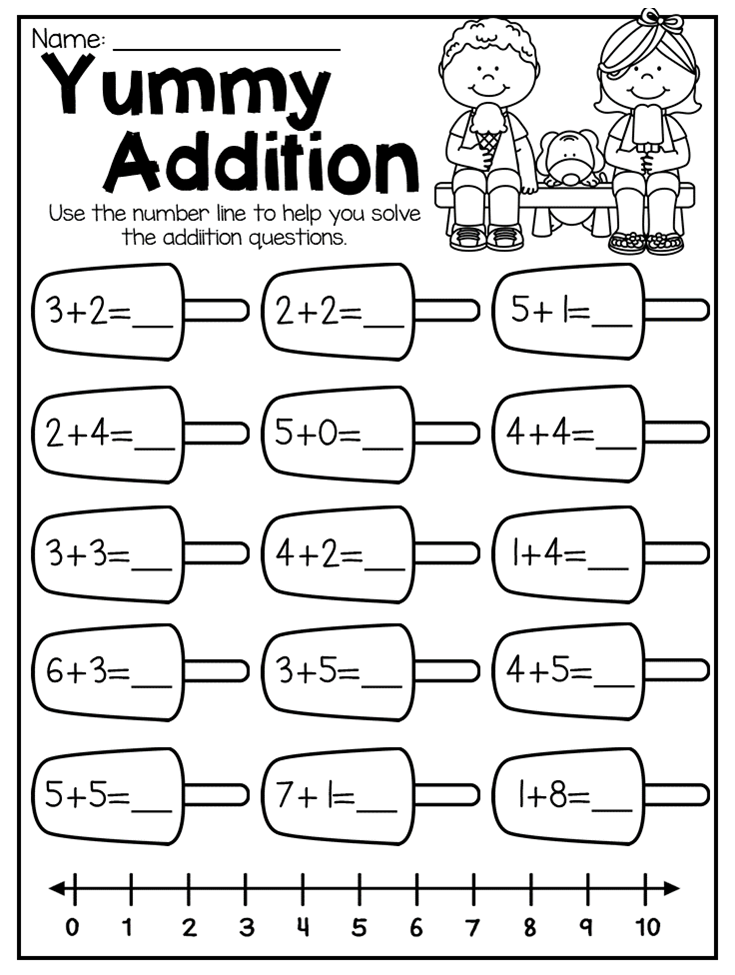 Assignments can be very useful for teachers in kindergartens and elementary schools to teach children about mathematical expressions more effectively.
Assignments can be very useful for teachers in kindergartens and elementary schools to teach children about mathematical expressions more effectively.
Geometric shapes for children - Interesting tasks
Here you can download and print geometric shapes for children in the form of interesting tasks in pictures, the implementation of which will not only benefit the child, but also a lot of fun.
Numbers for kids - Download, print and cut!
Numbers for children in various designs are presented here - numbers in the form of flowers, three-dimensional, gold, with various textures, ice, puzzle numbers, as well as simple numbers in black and red.
Mathematical signs and symbols - Picture tasks
Learning math signs and symbols with interesting picture tasks. By completing tasks, the child will learn to distinguish between greater than and less than signs, as well as plus, minus and equal signs.
Other interesting math topics
Educational games "Mathematics for Toddlers"
Games developed by the Chudo-Yudo children's portal especially for the youngest children (from 2 years old) who are just starting to learn to count to 10.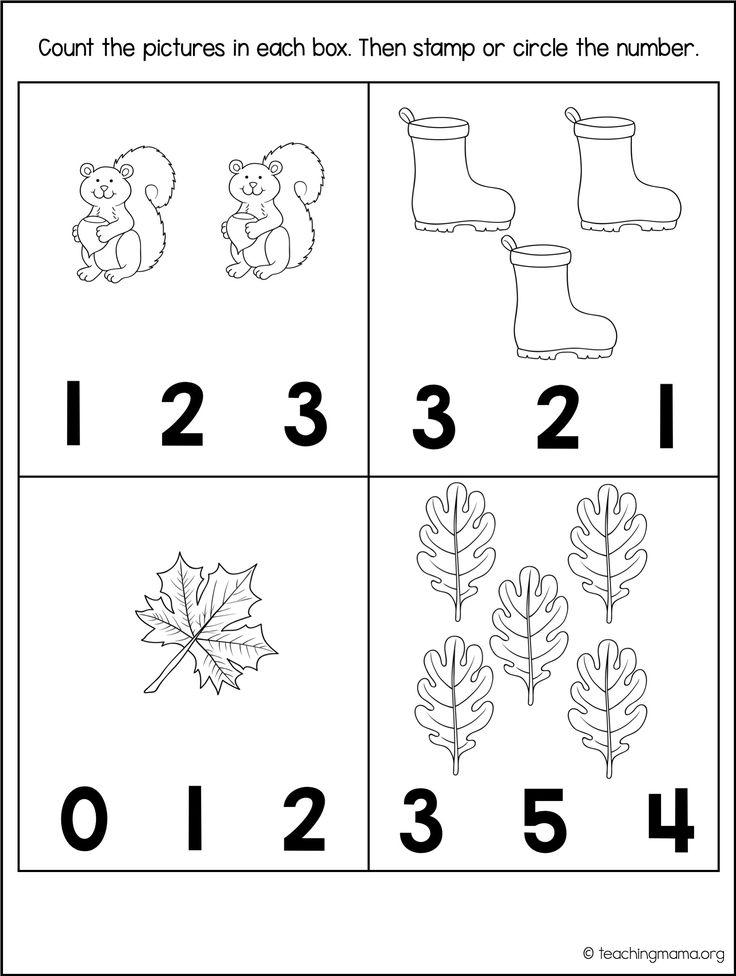 Such games contribute to faster memorization of numbers, and also allow the child to understand the technology of counting, which is difficult for his age.
Such games contribute to faster memorization of numbers, and also allow the child to understand the technology of counting, which is difficult for his age.
Math games for children from 4 to 6 years old
Games are designed to prepare a preschooler for the first mathematical knowledge and the ability to count. Here you will find interesting colorful games in which the child will need to find and count the specified number of objects or living beings. Children of this age really like to count, especially in a playful way.
Math examples online
A great opportunity for younger students to practice their knowledge of mathematics. After all, in these tasks you need to be able to quickly solve examples, because a certain time is allocated for the passage of each task. When the time runs out, then you are credited with points only for those examples to which the child managed to answer.
All educational materials presented in the section "Mathematics for children 4, 5, 6, 7 years old" are very useful for preschoolers to prepare for school, as well as for younger students to practice and test their knowledge.